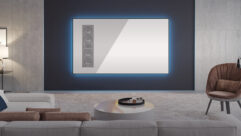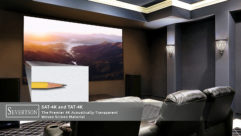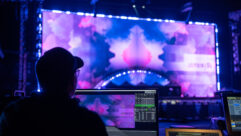Projectors continue to hold their own, as display options expand and diversify. We’ve only scratched the surface with 8K—starting with DP’s INSIGHT laser, which we saw at InfoComm. Last month, Japan’s NHK debuted its 8K broadcasting (even though content continues to lag, with 8K content even scarcer than 4K) and Sharp showed off their 8K monitor to acclaim all year. So 8K, technically, is here, with or without anything to play on it. Still, there is more to high-resolution display than entertainment and signage. Simulation and real-time imaging will clearly grow, and for museum and theme park markets people are no doubt incorporating it into current attraction designs. In the meantime, back on earth, new laser 4K projectors have hit the market, challenging benchmarks on size, weight, price and performance for their respective categories. Ease of installation has increased for many options, either through weight reduction, new chassis designs, more orientation options, and/or supporting calibration software. As a bonus, industrial design on some of the newest projectors has raised the bar.

In mid-November, Barco debuted the latest Barco Pulse low latency projection system, the 100% solid-state LED FL40. With no moving parts, the FL40 is designed from the ground up for the simulation environment’s rigorous training requirements; the sister FS40 supports night vision goggle (NVG) training with IR LED and offers dual input capability at 120Hz. Combining HLD and LED illumination technology with a DLP light engine, the FL40 promises excellent brightness and color fidelity, combined with extreme lifetime and maintenance-free 50,000 hours. Thanks to the Constant Light Output (CLO) functionality, it claims complete predictability in linear brightness p e r f o r m a n c e over the life of the projector. The true solid state nature of the FL40 (with no moving parts inside), combined with the built-in ruggedness, makes the projector very suited for motion platform operation. The FL40 is built on the proprietary Barco Pulse software platform. This powerful and flexible architecture allows for advanced low-latency processing operations designed to take place in just one single step.

Also in mid-November Canon U.S.A. claimed “the world’s smallest and lightest native 4K LCOS projectors in their class” with the introduction of the REALiS 4K6020Z and 4K5020Z (as well as a new 4K zoom lens). Both new projectors measure 18.8in (W) x 7.1in (H) x 21.4in (D) and weigh just 41.8 pounds, which the company compared as “less than half the weight of competing Native 4K laser projectors.” Canon is also adding to the company’s lineup of RS projector lenses with the introduction of the RS-SL07RST 4K Standard Zoom Lens. The RS-SL07RST projector lens is the seventh in the lineup; all seven RS projector lenses are compatible with the two new projectors. The new 4K6020Z and 4K5020Z Native 4K Laser LCOS Projectors are pitched at a variety of applications, including art galleries, museums, schools and medical institutions. They are also suitable for product design and simulation use where both high-quality imaging and accurate color reproduction are a must.
Both projectors feature LCOS panels and Canon’s proprietary AISYS optical system that helps to deliver 6000 and 5000 lumens respectively. This technology, when combined with true Native 4K (4096×2160) resolution, helps both projectors to produce a cleaner and more robust image with virtually no grid lines. Contrast is 22,000:1 achieved by the combination of an image engine that analyzes the contrast of each frame and a double-door type shutter system which allows the iris to operate fast-tracking scenes instantly and reducing light leaks. The laser-light source supports up to 20,000 hours of operation in typical use or up to 40,000 hours in Canon’s Long Duration Mode. Start up clocks in as little as two seconds while in Fast Boot mode. In addition, users are able to create presets to be set up to their specific preferences and needs. HDR support (including HDR10 and Hybrid Log-Gamma) in both expands colorgamut range but also the overall brightness. Compatible with seven optional genuine Canon interchangeable lenses for a wide variety of applications, including Canon’s new RS-SL07RST 4K Standard Zoom Lens, this lens can project images up to 600 inches and can even project onto curved surfaces—maintaining focus in the center of the image when peripheral focus has been adjusted.

With 4K UHD resolution and Christie BoldColor technology, the Christie 4K10-HS and HK710-HS 1DLP laser projectors are also equipped with Christie’s unique Twist warping and blending software. This, and their compact size, quiet performance, and omnidirectional capability makes them flexible for a wide range of business, public, education, and entertainment venues. The BoldColor Technology uses blue and red laser diodes with what Christie describes as a patented optical chamber, and supporting software to saturate color. The projector supports 4K60 video over a single HDMI or Display Port cable; an integrated camera assists with setup and alignment, and delivers auto zoom and focus. Both models are compatible with two new 4K specific lenses and both feature two expandable option slots, SDVoE connectivity for video over IP and option of using the Christie Terra products.

On the LED front, Sony anchored their NAB and InfoComm booths with the eye-popping 8K x 4K Crystal LED System, playing footage shot with the UHC-8300, Sony’s first 8K System Camera. Also new in 4K LED, the Leyard DirectLight X LED Video Wall System is the next generation of that award-winning family. The X adds increased video processing and management capabilities. Significantly, it is the first LED video wall system to integrate a remote power supply and advanced processing directly into the product. It supports 4K video standards, signal extension, multi-source processing, system monitoring and modern web-based graphical control software. DirectLight X reduces dependence on external processing systems while making the video wall easier to operate and monitor. A new Leyard WallDirector software simplifies installation monitoring and management. It also incorporates Leyard WallSync, providing precisely synchronized video playback and genlock across the video wall. Available in 0.7, 0.9, 1.2, 1.5, 1.8 and 2.5 millimeter pixel pitches. It features a 27-inch cabinet with a 16:9 aspect ratio, and comes with the Leyard Remote Power Supply, a redundant and hot swappable power supply that eliminates heat, weight and points of failure from the video wall.

Digital Projection made waves when it brought an 8K laser projector to InfoComm 18. The DP 25,000 lumen INSIGHT LASER 8K projector, developed in collaboration with Delta Electronics, produces a precise 33 million pixel resolution with deep black levels and a broad color gamut. A capable selection of zoom lenses, providing extensive lens shift, ensures integrators installing the INSIGHT LASER 8K will have complete flexibility with respect to projector placement in both portrait and landscape. With a 7680 x 4320 resolution and 25,000 ANSI lumens, it incorporates DP’s new 3×1.38” DarkChip DMD and ColorMax and proprietary Smear Reduction Technology. A companion controller software is ideal for use in large installations or where projectors are in multiple locations in a building; the software can dramatically reduce the time required for setup and configuration from a single network-enabled PC.
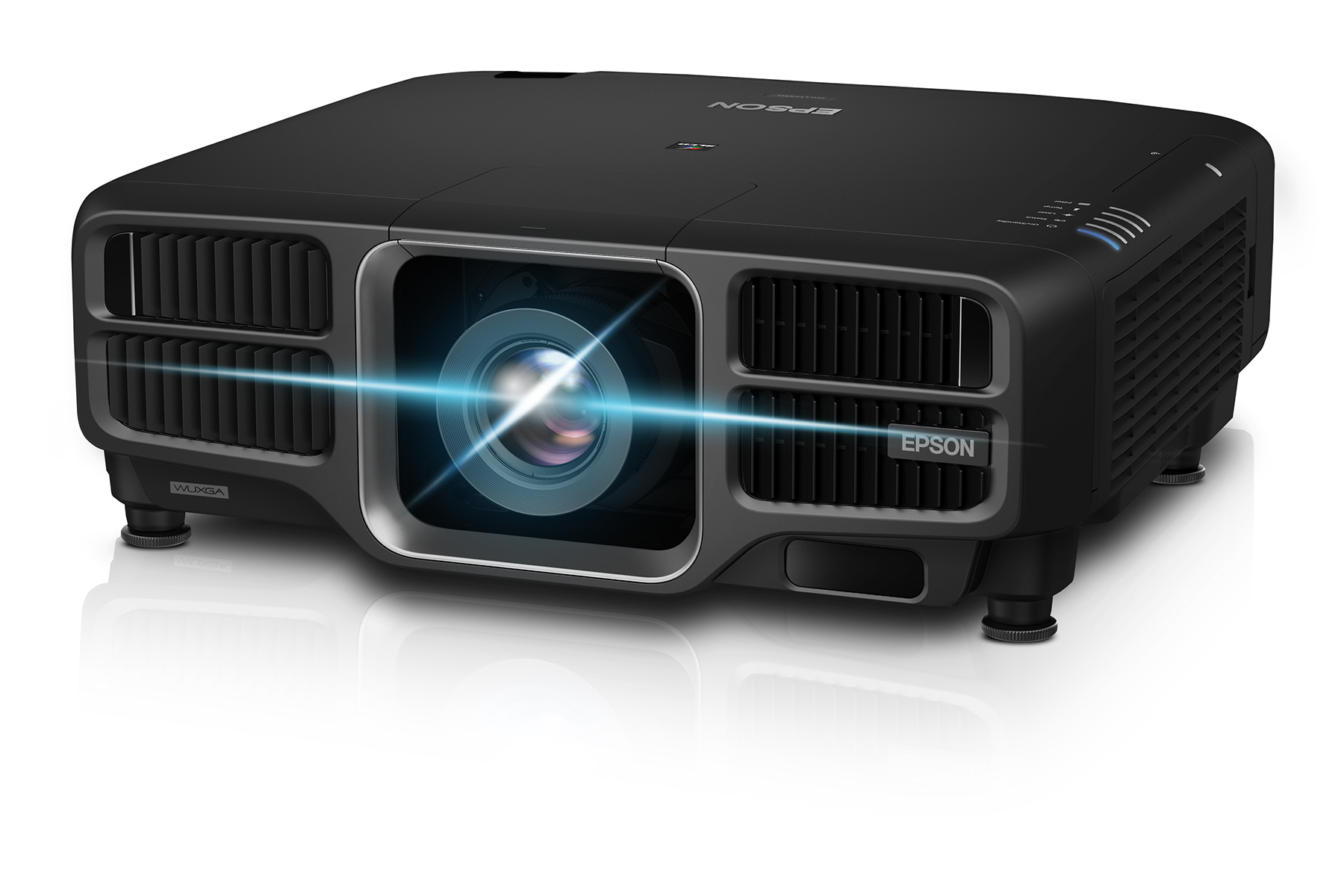
The Epson Pro L1755UNL WUXGA 3LCD Laser Projector with 4K Enhancement has received several awards for its various iterations, in part because it can deliver 15,000 lumens of color/white brightness from 120V in a compact form factor. And it’s pretty. Now, with the 4K enhancement, the native WUXGA resolution gets Epson’s 4K Enhancement Technology. Built-in Edge Blending and 3G-SDI and HDBaseT are among the integration-friendly features. Nine optional powered lenses are sold separately.

Making entry-level, 4K-ready accessible, NEC updated two popular laser/LCD projector models with last month’s launch of the P525WL and P525UL. The P525WL replaces NEC’s P502WL-2, and the P525UL replaces NEC’s P502HL-2. For each new model, the imaging unit has been changed from DLP to LCD technology with 5200 center lumens. These 4K-ready projectors support UHD signals, while WXGA and WUXGA native resolutions produce high-definition images. Installation series features including manual horizontal and vertical lens shift, 1.6x zoom lens and HDBaseT input. Quick start-up and shut-down ease operations for users, and the projectors claim quiet operation. Both models offer advanced networking capability and improved wireless collaboration capability. They feature Dual HDMI for seamless switching between Blu-ray, computer or other digital sources; USB with 2.0A support for powering third-party devices; LAN port for network control and asset management; and Optional Wireless Module (NP05LM1) with MultiPresenter capability for up to 16 simultaneous connections. They will begin shipping this month at a minimum advertised price of $2,299 (P525WL) and $3,099 (P525UL).
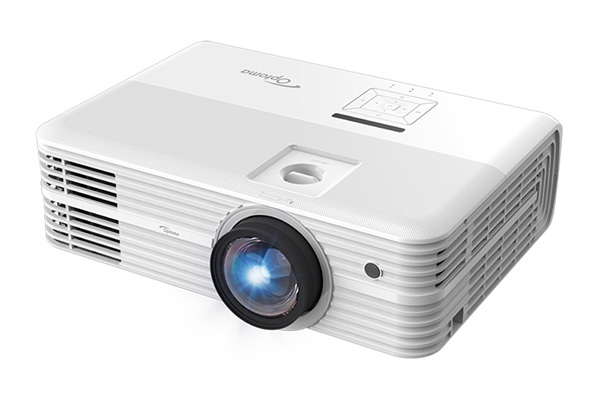
Optoma has debuted two new 4K UHD projectors designed for detail and color performance in professional, corporate and house of worship environments. The Optoma 4K550 and 4K550ST are the latest additions to Optoma’s line of 4K UHD projectors, and combine advancements in 4K technology with flexible installation and ease-of-use features. Powered by Texas Instruments DLP chipset with XPR technology, the Optoma 4K550 (5K lumens) and 4K550ST (4500 lumens) offer 3840 x 2160 4K UHD resolution and display 8.3-million addressable pixels on-screen. Both projectors are HDR10 and REC.2020 compatible for color precision and include vertical lens shift and 12v trigger for installation flexibility. With a short throw ratio of 0.78:1, the Optoma 4K550ST can display 100-inch images from a few inches away, with the integrated 1.6x optical zoom. The projectors are also 3D ready with DLP Link compatibility and equipped with a variety of input and connectivity options, including HDMI, VGA, RS-232C and LAN, for easy integration and control with devices that require full support for Crestron, IP Link, AMX and PJ-Link protocols. The new Optoma 4K550 and 4K550ST projectors are available for purchase for an estimated street price of $4,499 and $5,499, respectively through authorized dealers.
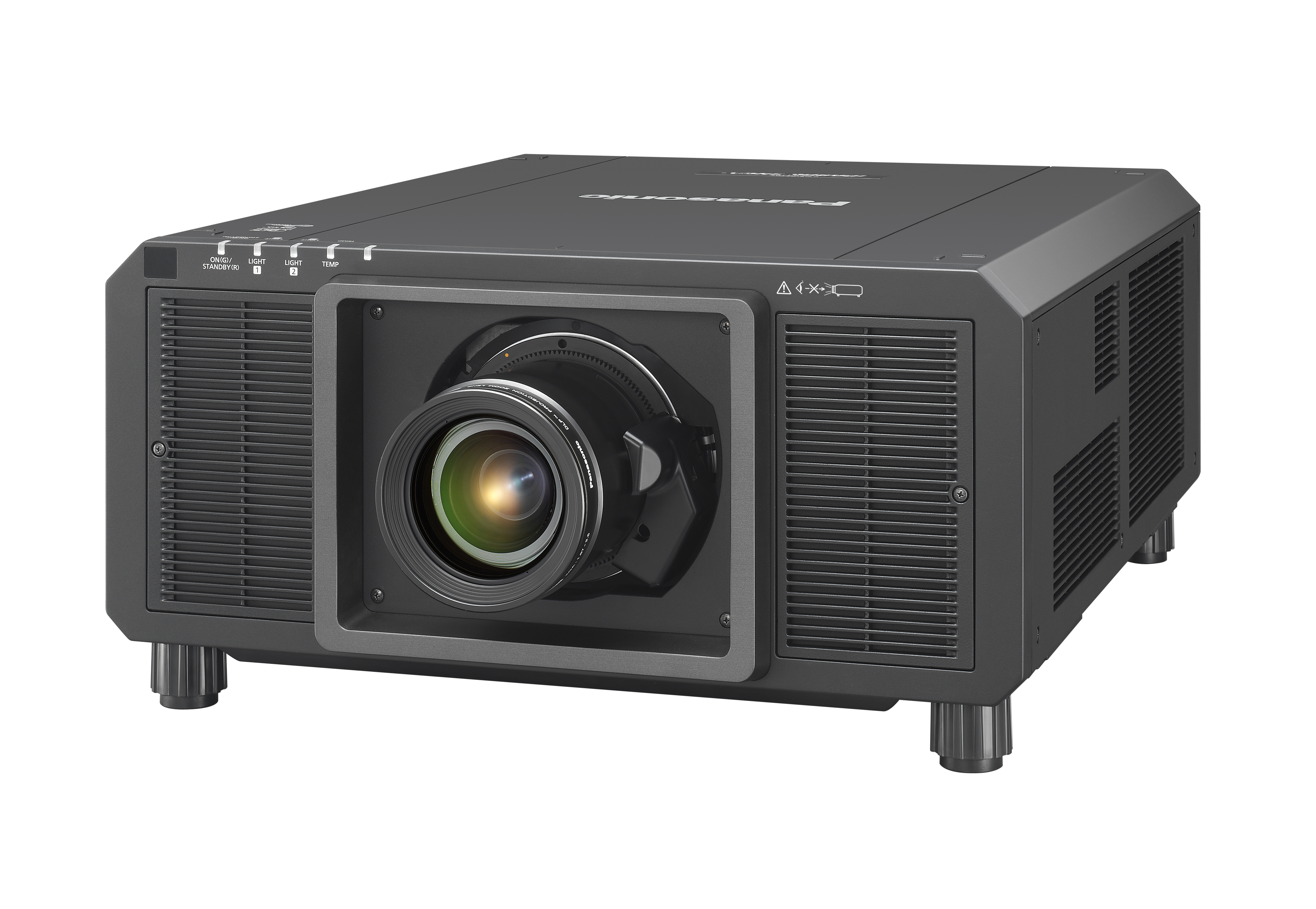
Panasonic has added the PT-RQ22KU 3-Chip DLP 4K+ SOLID SHINE laser projector to its 3-Chip DLP laser projector portfolio. This large-format family member claims 21,000 lumens of maximum brightness, a refresh rate of 240Hz and 20,000:1 contrast ratio in WUXGA or SXGA+ resolution. Panasonic claims 5K pixel performance with a quad pixel drive system on a WQXGA chipset. Compact size, flexible 360-degree installation, powered lens shift, and wide range of optional lenses pitches it for rental, staging and large venue installations. The projector can be mounted in any 360-degree configuration without picture distortion in temporary or permanent installation. Single LAN cable DIGITAL LINK connectivity simplifies installation, reduces cabling and associated costs, and enhances reliability.

Maximizing performance at lower lumens the new Sony VPL-GTZ270 and VPLGTZ280 projectors are 5,000 lumen SXRD models with native 4K (4096×2160) resolution and play in large format applications. Both the new projectors can also operate in 4K 3D mode; both benefit from SXRD blacks. The 270 is positioned for entertainment use including planetariums, theme parks, museums, and retail; the 280 is ideal for the demands of simulation, visualization and training. The 270 claims an immersive reality viewing experience with image enhancement functions including “Reality Creation” upscaling and support for HDR. A wide color space covers the full DCI range and simulates the new ITU-R BT202 color gamut. The 280 uses high-speed motion functions and new highspeed 4K 120Hz signal processing for 4K3D 60Hz left eye/right eye. So expect reduced blur in fast motion scenes, in addition to smear and transport delay reduction. Infrared light output supports night vision simulation. Vibration resistance (as well as a new chassis on both models) means effective installation options are increased, including options for complete tilt angle free capabilities including clockwise or counterclockwise, portrait or landscape. The new chassis makes both more stacking-friendly. Both are quiet at under 35bB. These new projectors join the Sony lineup that includes the VPL-GTZ1 model to provide a more versatile 4K laser light source lineup, further evidence of the expansion of the 4K ecosystem.
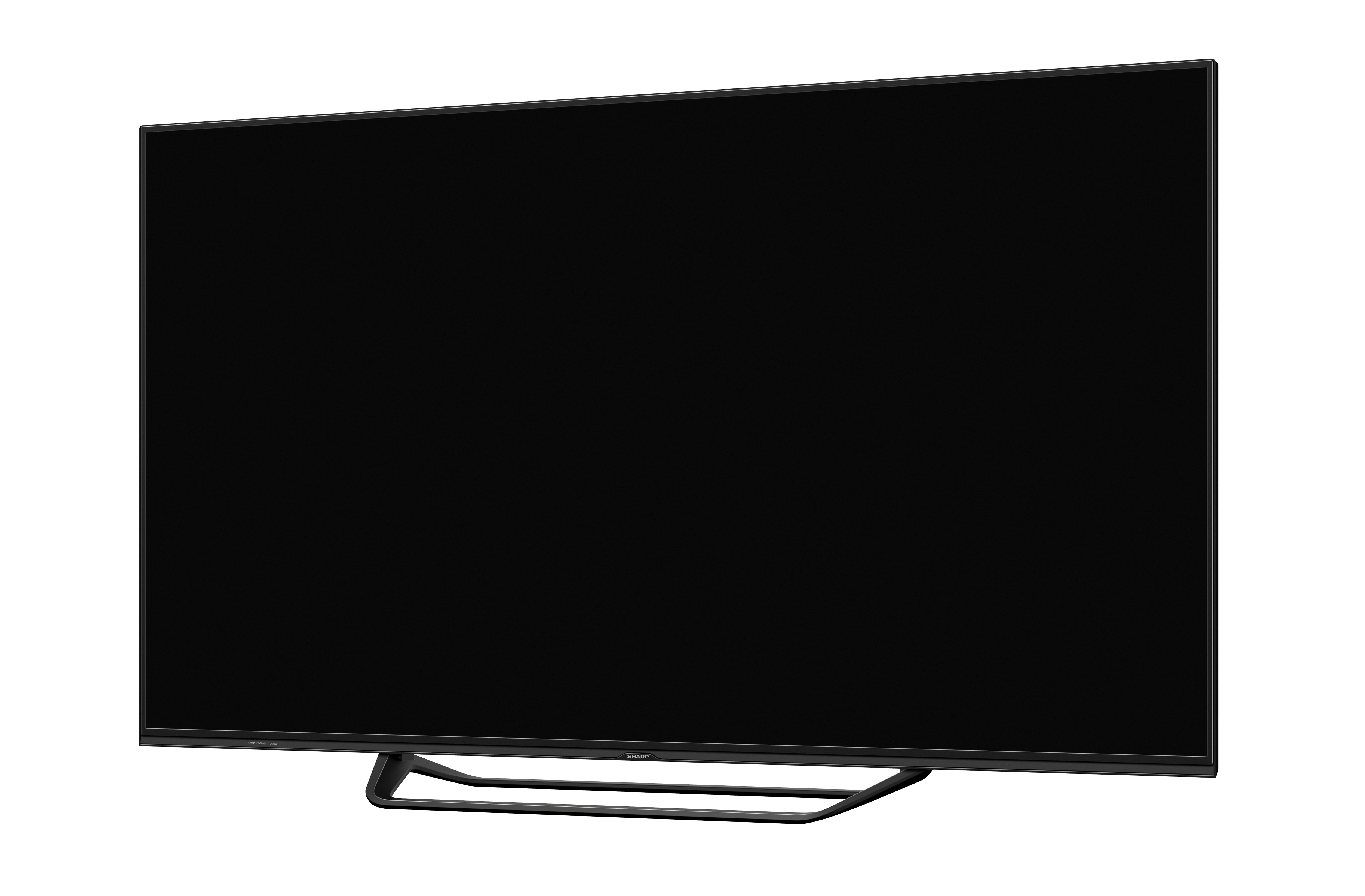
It’s not a projector, but the Sharp Electronics 8K Ultra HD LCD 70” Display attracted a lot of awards this year since its debut at NAB and it serves as a reminder that there is still an image-quality frontier to be explored. Its compelling picture comes via confirmation to the 8K Ultra-HD standard (7680 x 4320) supported by HD (HLG/PQ) functionality (peak brightness of 1000 nits). Sharp’s Rich Color Technology and Mega Contrast support depth of color, blacks and contrast. It can display more than 1 billion pixels in 10-bit color space and can convert from 2K and 4K input sources, for flexibility on content. It works beyond broadcast for surveillance, post-production, medical and education.



